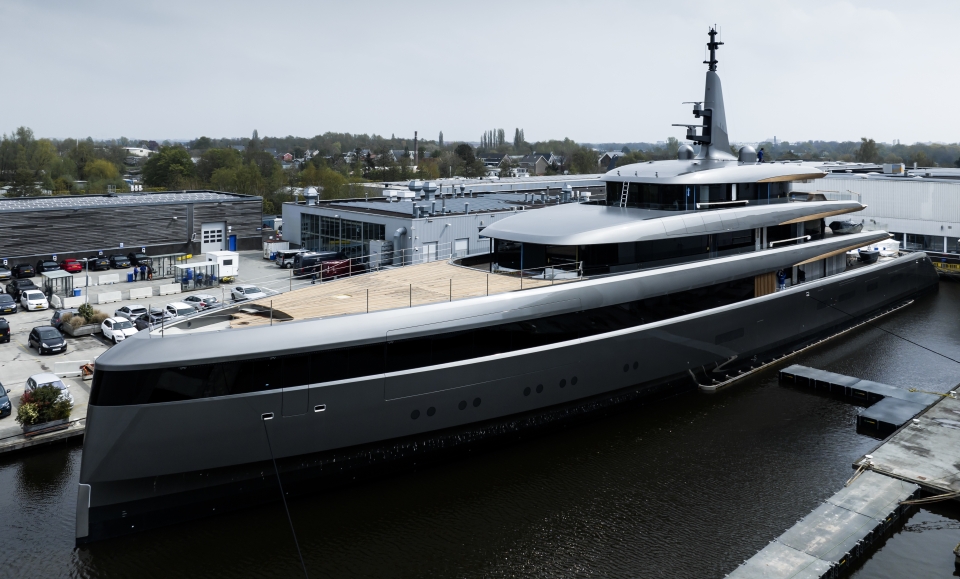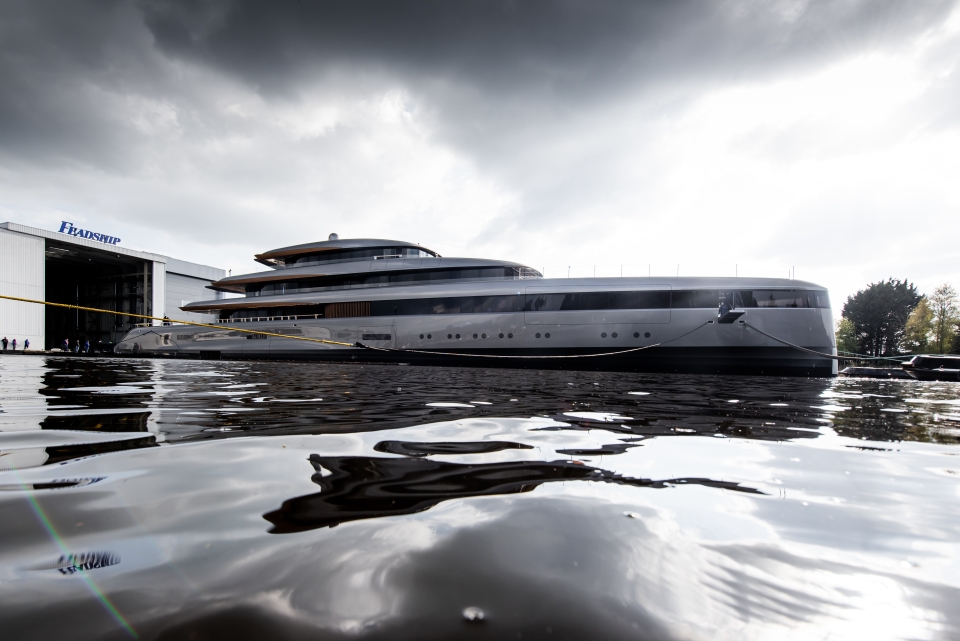One of the most technically advanced and dynamically designed Feadships of recent years has slipped out of the construction hall at the yard in Aalsmeer for final outfitting in advance of sea trials. Project 710 extends to 84 metres and can be powered by HVO.
According to the design team, the brief called for every yacht design norm to be questioned and challenged, both in terms of architecture and engineering, to create a next generation project. Its length is optically stretched by a low profile, horizontal styling features, and very clean shapes flowing aft from a strong bow showcasing strength and seaworthiness.
Also read: Feadship reveals fuel cell solution for sustainable yachting
HVO
Striving for innovation and first-class engineering, Project 710 is the next step on Feadship’s path toward building zero-emission superyachts by 2030. It is the first of the new generation of large yachts furthering carbon reduction through hulls optimised at cruising speed instead of top speed, weight control and advancements in electric propulsion.
In addition, the yacht has the ability to run its generators on HVO (Hydrotreated Vegetable Oil), a second-generation biodiesel, a so-called net zero CO2 fuel. Sea trials and delivery fill will be HVO, reducing total CO2 emissions by about ninety per cent.
No drive shafts
Using Feadship’s Advanced Electrical Drive (FAED) programme for diesel-electric hybrid power, Project 710 has 4.5 times more electrical storage capacity than the yacht builder’s first hybrid yacht, Savannah. Project 710 has no drive shafts, and no rudders.
Electric drive and steering are through a pair of electric Veth contra-rotating thrusters. Feadship and Veth collaborated on computational fluid dynamics (CFD) analysis of the drive legs and propellors’ shapes to maximise efficiency and minimise vibration.
Also read: Feadship moves 67-metre superyacht out of construction hall
Use of waste heat
Providing energy for the hotel load accounts for much of a yacht’s fuel consumption. For Project 710, the engineering team took a deep dive into capturing waste heat from the custom variable speed generators and air conditioner chiller to supply heat to the AC system, pool water, domestic water, engine preheating, and more. An innovative heat pump system allows the yacht to draw heat from seawater.
Also read: How Feadship plans to power yachts ready for future fuels
Interior and exterior design
For the first time in years, Feadship has launched a yacht with a single level engine room, affording considerably more room for creativity with accommodation. Both the exterior design and interior architecture and design are by the British firm RWD in collaboration with MONK design.
The yacht features an asymmetrical atrium staircase leading to a lower deck dining saloon, where an entire wall opens to reveal a terrace view just above sea level. Near the stern is an Aqua Lounge with massive windows below water level. In place of a mooring deck forward, there is a bow observation lounge with double-curved glass floor-to-ceiling windows. Terraced aft decks float without pillars, while glass balustrades allow unobstructed views from both aft deck and fully glazed aft interior spaces.

Also read: Superyacht Viva lands Feadship KNVTS Ship of the Year Award








